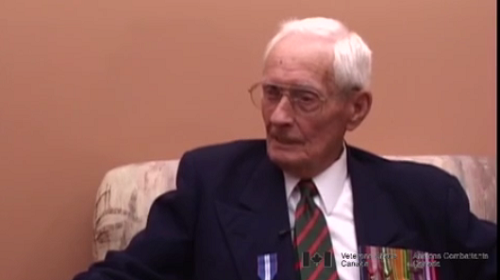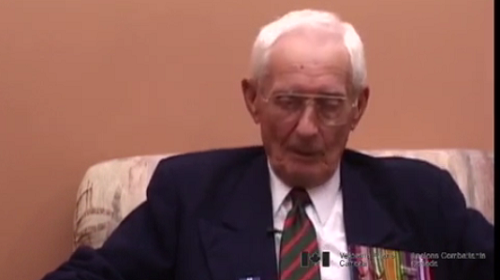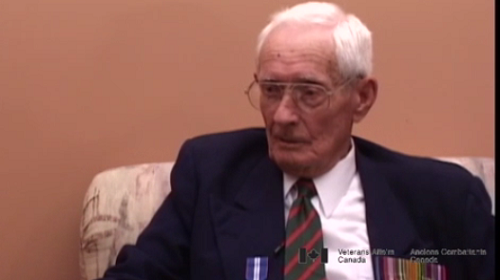Christmas Day on Stanley
Heroes Remember
Christmas Day on Stanley
Transcript
We were down in Stanley.
We had been occupying the hills right west of Stanley, just on the,
following the island along there at a place called Palm Villa.
So we were pushed right back to there, right into Stanley.
So they decided on the 25th that we would attack Stanley.
Well that was a mistake.
I mean, but what else could you do?
You couldn't run out and say, “I'll surrender.”
So orders were given to attack Stanley. Yeah.
So we had to go up through the village and it was bad. Yeah.
And see they had, the troops that were holding Stanley,
they were attacked during the night
and the Japs now were in position, right down through this slope.
There was a couple of bungalows there
and the side that I was on we had these bungalows to capture.
So we had to go up through a cemetery.
An old cemetery and that old cemetery had a stone wall around it,
maybe three feet high.
When they made that wall they made a cement top on it
and while the cement was fresh they'd saturated that cement
with broken bottles, all broken glass.
Every inch of that, about this wide on top, two feet maybe,
and if you tried to get over it you'd cut yourself.
So we broke the glass off
and it was around one o'clock in the day now.
We made places so we could get over for to
attack these bungalows cause the Japs were in the bungalows.
And the roof of the buildings over there are made with a big,
big shingles which is rather, it's a U shaped thing
so the water would run in drains.
So they had got in the bungalows
and they had opened gaps in the floor and the ceiling,
and they put tables there and they got up, put chairs on the tables,
and they got in the attic, so all they had to do was push off a shingle and
there they could look right down at us coming up through the cemeteries.
So that's where most of the fire,
and you didn't know where it was coming from till we got the bungalows.
But after we got the bungalows,
we took the bungalows back from the Japs.
That was where we lost most of ‘D' company. Yeah.
I think we were 74 percent casualties by that time.
We got the place, but we couldn't hold it.
They immediately counter-attacked again.
They just had these reserves right there.
So that's when we were finished there that day
and then we made our way.
We got orders to come back to Stanley.
So we dragged our wounded and the dead we left them there.
And that, we held that until in the night orders came through
that the British were going to call a quit and that's where it ended.
Description
Mr. Ross describes the Royal Rifles’ Christmas Day assault on the town of Stanley and the British surrender the next day.
Lancelot ‘Lance’ Ross
Mr. Lance Ross was born in Lac-Megantic, Quebec on October 7, 1911. His father was a carpenter and a family farmer. Mr. Ross went to work at the age of fourteen, holding many odd jobs that paid $1.00 to $1.50 a day. Impatient with the wait for joining the air foce, Mr. Ross joined the army and went overseas to Hong Kong. He was captured and spent time in POW camps. During this time, Mr. Ross kept a diary that was used for the prosecution of Japanese war crimes. After the war, he was active in getting recognition for Hong Kong Veterans.
Meta Data
- Medium:
- Video
- Owner:
- Veterans Affairs Canada
- Duration:
- 4:01
- Person Interviewed:
- Lancelot ‘Lance’ Ross
- War, Conflict or Mission:
- Second World War
- Battle/Campaign:
- Hong Kong
- Branch:
- Army
- Units/Ship:
- Royal Rifles of Canada
- Rank:
- Sergeant
- Occupation:
- Platoon Sergeant
Related Videos
- Date modified:












